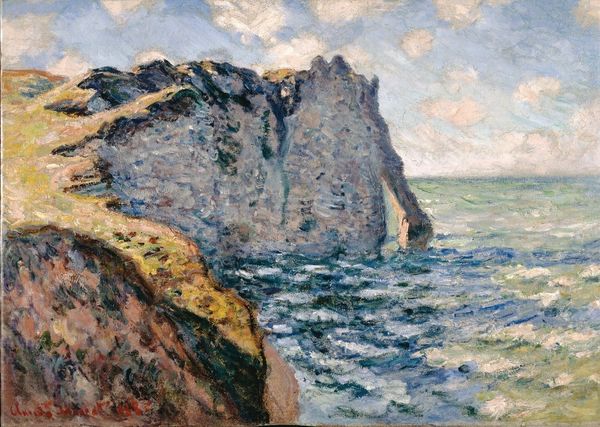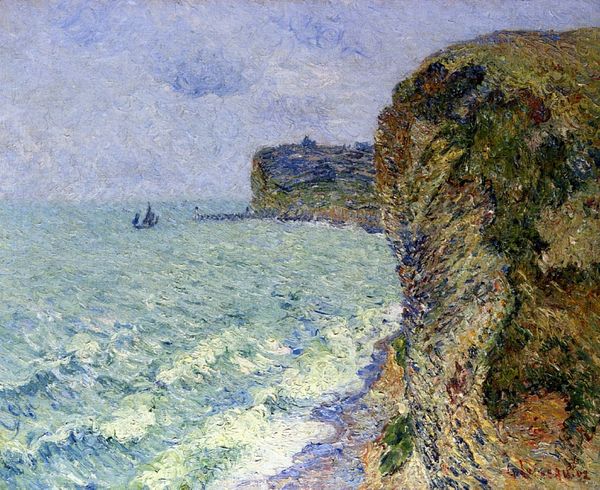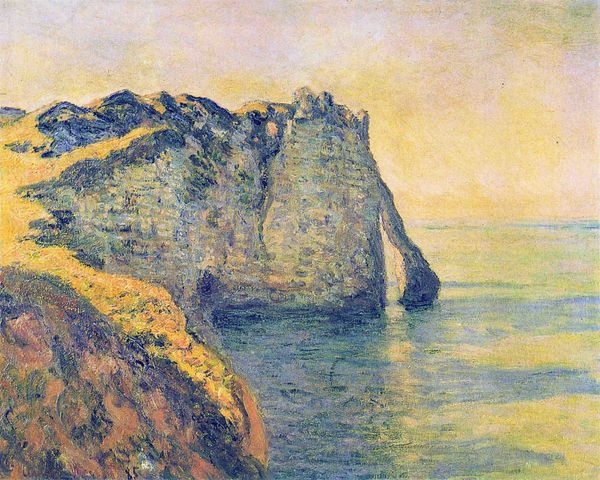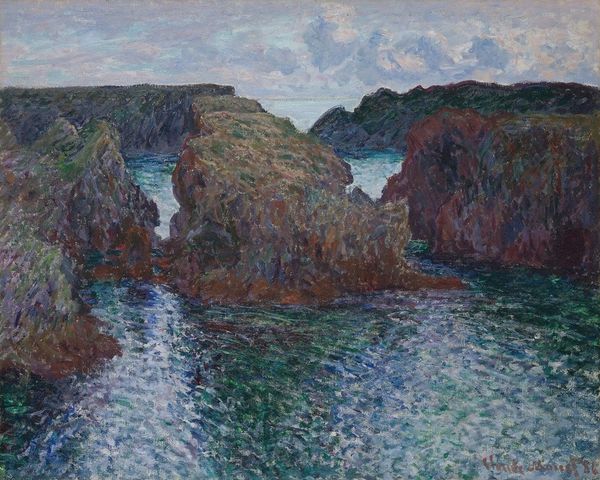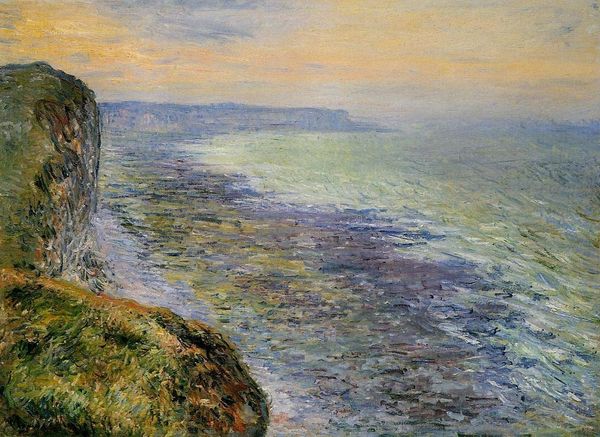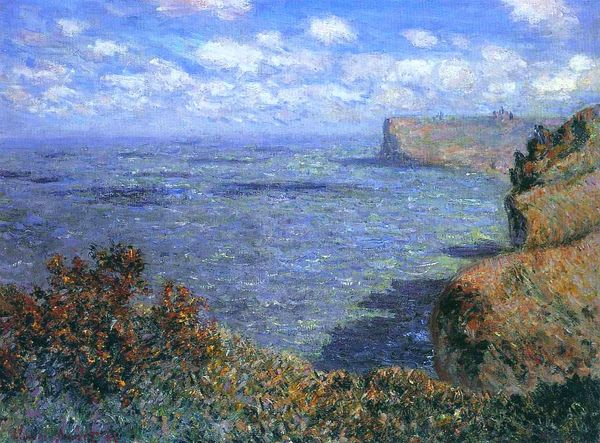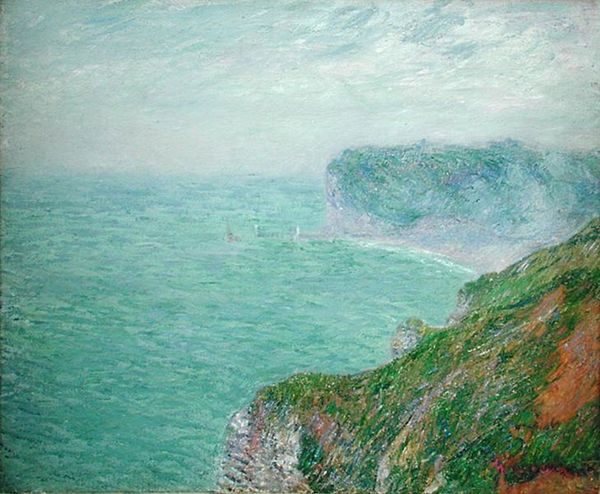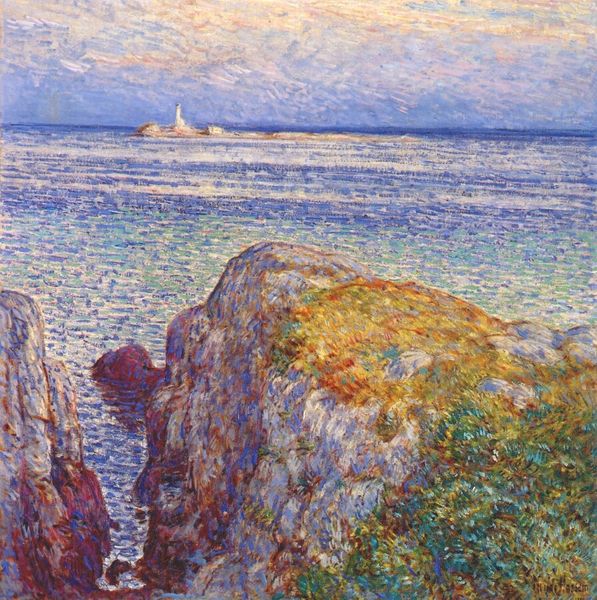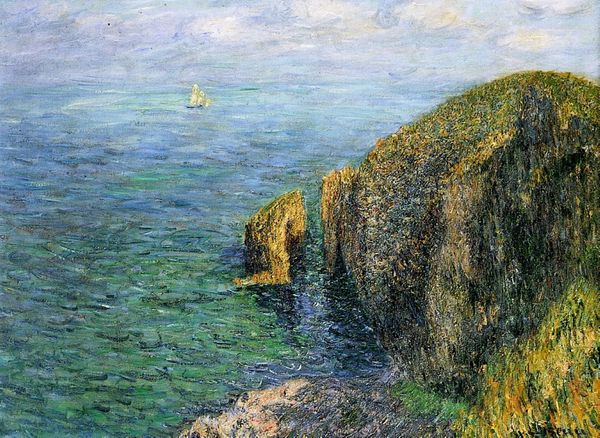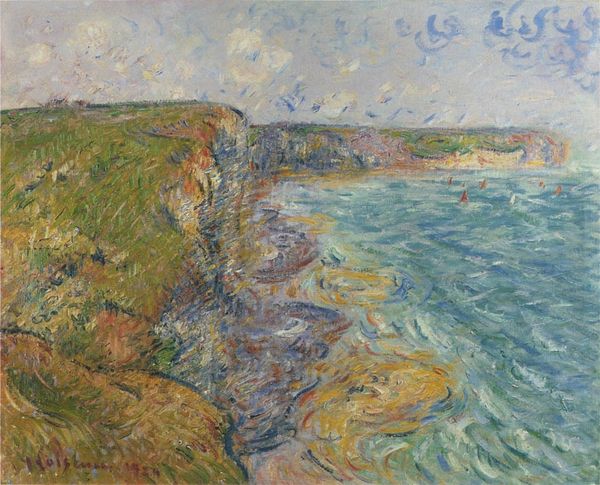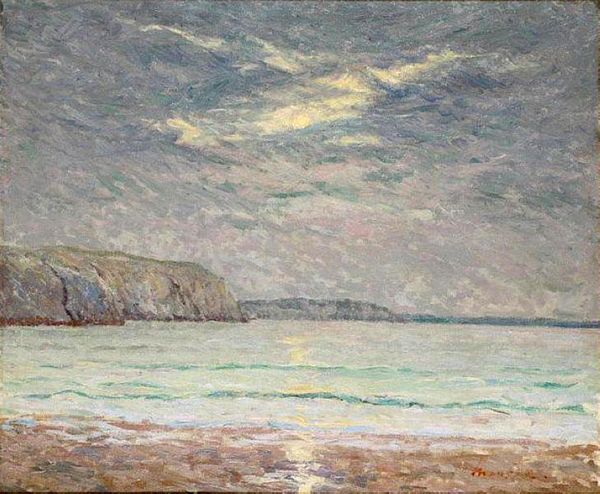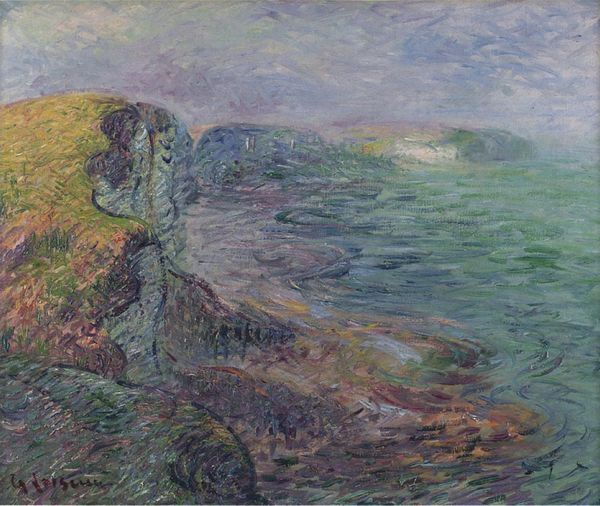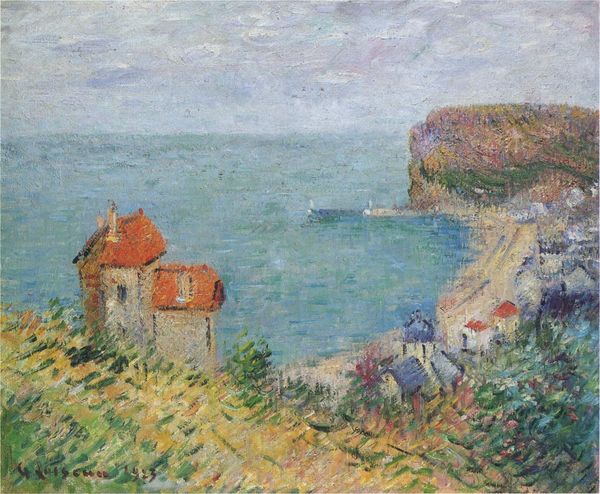
painting, plein-air, oil-paint
#
cliff
#
painting
#
impressionism
#
plein-air
#
oil-paint
#
landscape
#
impressionist landscape
#
oil painting
#
ocean
#
rock
#
seascape
#
post-impressionism
#
sea
Copyright: Public domain
Curator: Claude Monet painted "The Sea Seen from the Cliffs of Fecamp" in 1881. At first glance, the vibrant yet somewhat muted palette evokes a sense of serene contemplation. Editor: Yes, contemplative is a good word. But those juxtaposed, almost frantic brushstrokes across the sea create a subtle visual tension. How does the setting influence that? Curator: Fécamp, a small port town in Normandy, provided Monet with a dramatic subject. The rugged cliffs, boldly dominating the left side, act as a frame, drawing our eye towards the expansive sea. He captures the constant interplay between land and water, nature’s power. Monet began producing many landscape pieces in series. Why do you think he found that to be of value? Editor: Think about Impressionism. It really tried to push against academic traditions of painting and to address the conditions of modern life. The new accessibility afforded to different locations meant there was the possibility of being on location, “ en plein air,” and capturing landscapes like this as Monet did. Curator: Absolutely. Monet sought to capture the ephemeral nature of light and atmosphere. Observe the vibrant colours flecking the cliff face – blues, greens, even touches of red and orange. These broken brushstrokes serve to convey the transient effects of sunlight, mirroring how such views of working-class leisure and accessibility started to become represented in visual culture and advertising. Editor: Precisely. It's as though the objective reality is refracted through his subjective perception. The composition's asymmetrical balance is quite striking too. The weight of the cliff is offset by the vastness of the water, creating a dynamic harmony, don't you think? Curator: Indeed. It reinforces the sense of a lived experience, an individual viewpoint capturing a fleeting moment in time. We observe how the Post-Impressionists pushed Impressionism's aesthetic language even further. Editor: Well, examining its intrinsic qualities truly brings the period and setting to life for me. Thanks! Curator: For me, focusing on its cultural moment helps illuminate its appeal to this day.
Comments
No comments
Be the first to comment and join the conversation on the ultimate creative platform.
